Varieties of decorative columns and their use in the interior

The interior of a modern home is not complete without design. Many solutions include additional decorative elements that can create extraordinary compositions and zone the interior space without overloading it or depriving it of freedom.
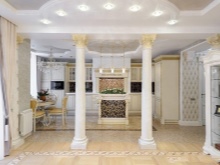
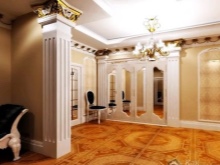

Peculiarities
Despite the fact that in ancient times the columns served as supports for heavy floors in massive buildings, now they are often perceived as decorative elements, losing their functional purpose. They are increasingly used as design techniques in indoor and outdoor spaces. Columns today serve several purposes and are often designed for aesthetic satisfaction. The column consists of three parts:
- the lower part, which is the base;
- the middle part is called the trunk;
- the capital is the upper, final part.
Decoration with bas-reliefs or ornaments made of plaster and alabaster is allowed.
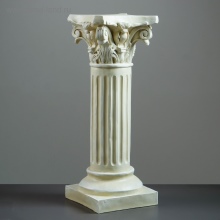
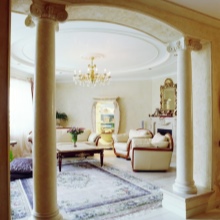
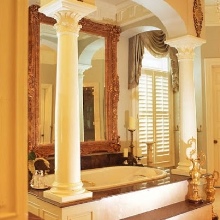
Modern designs are of three main types.
- Colonnades. Used for zoning rooms, they leave a feeling of freedom due to the lack of walls. Structures made during construction serve as supports.
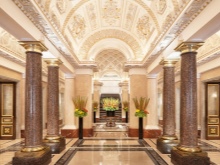
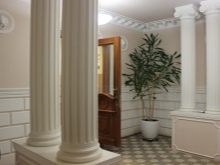
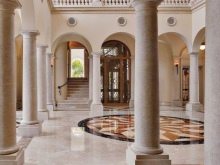
- Half columnswhen the column has no top or bottom. They are created as an independent decorative element or serve as an imitation of semi-columns. They perform all the same decorative functions, creating a division of space into zones and focusing on decorative techniques. They look as expressive as full-fledged designs.
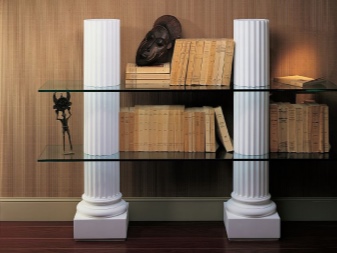
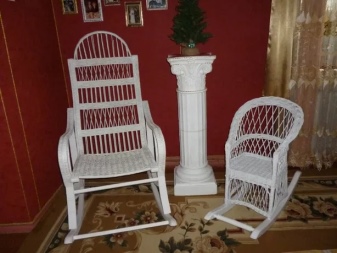
- Paired objects connected by a common arch, but they can do without it. A proven classic for centuries. They are usually located on the sides of doorways, fireplaces, stairs. They mainly serve as a decorative element, zoning the space.
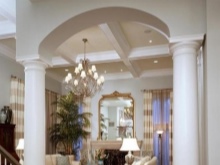
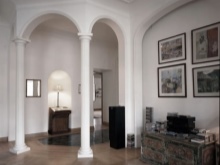

The dimensions of the columns, their shape and location effectively affect the visual perception of space - thin and tall graceful structures optically expand the space, while heavy and massive ones create a feeling of isolation, visually reducing the surrounding space. In some cases, this is justified, it evokes a feeling of reliability, strength and boudoir comfort.
The presence of columns always means classic, luxury, rich home decoration and sophisticated style.
And yet, despite age-old traditions, modern trends use them in many styles, skillfully combining classics with modern and baroque styles, hi-tech, loft and minimalism, art deco and retro, oriental style, provence, country, as well as many other.
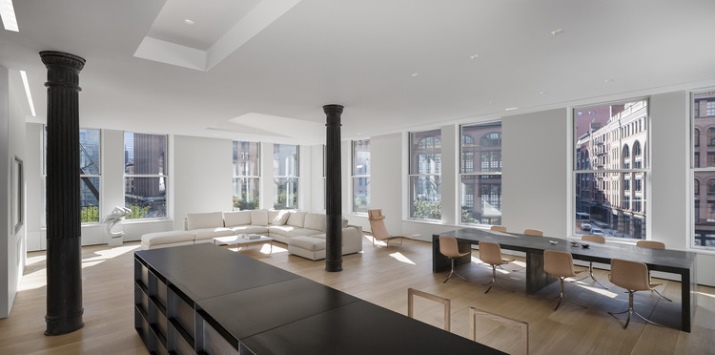
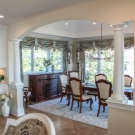
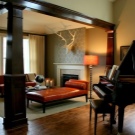
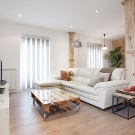
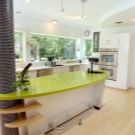
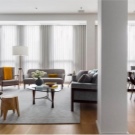
They give individuality and a unique look to a space in an apartment or country mansion, office space or entertainment center. Columns are used to decorate doorways and staircases. Today it is fashionable to combine decorativeness with functionality - in the columns they arrange hidden niches for lamps, shelves, candelabra and pilasters are attached. Used to hide wires and cables, false columns made of plasterboard, MDF, plastic or wood. Hollow structures have a support frame.
During major repairs, built-in columns act as load-bearing elements, whose task is to serve as a support for the ceiling, if it is supposed to expand the free space and remove part of the walls. The decor is made of high-strength materials - brick, concrete, metal. They focus on the columns, using double structures, while observing a single style direction.
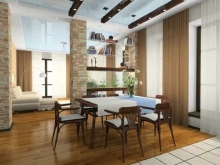
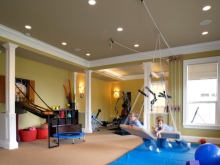
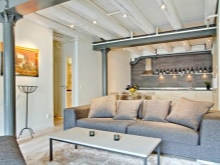
How to arrange?
The columns located in the house are intended for space zoning as a design technique in interior decoration. A well-located colonnade in the apartment will separate the living room from the kitchen area. Stationary telephones, TVs, audio systems can be fixed on them. Colonnade zoning is used in large spatial spaces - palaces of culture, theater halls, etc.
- Round paired columns look spectacular, framing the exit to a terrace, loggia or balcony, while emphasizing spatial freedom and without interfering with natural light. They look spectacular on the sides of a flight of stairs or a fireplace.
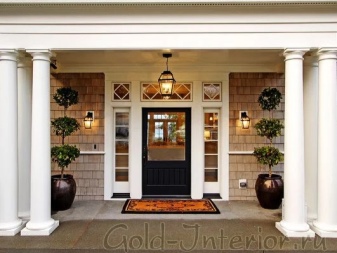
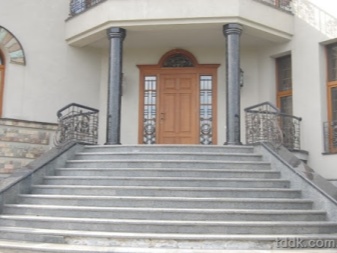
- Half columns look great on the wall in the bedroom, where they serve as the basis for lighting, photo collages, decorative panels, shallow niches with themed photo wallpapers. Between them there is a place for a TV, furniture, for example, a dressing table.
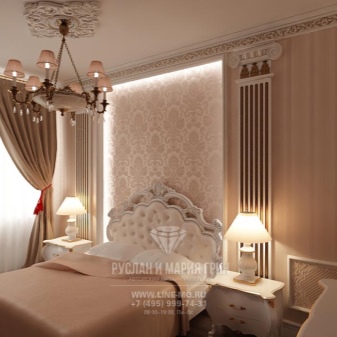
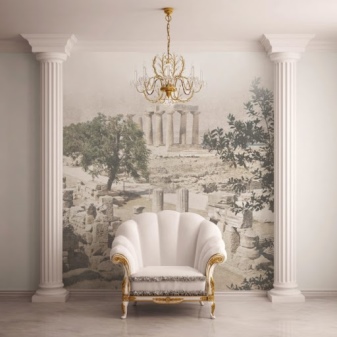
- Designers use paired columns to decorate doorways, decorating them with patterned elements, architraves or thread curtains, if this is the entrance to the bedroom. In these cases, as a rule, graceful antique-style columns are used. Often, in the lower part, such structures are connected to the wall with a solid base, which serves as a furniture place for decorative interior elements, for example, flowerpots, figurines.

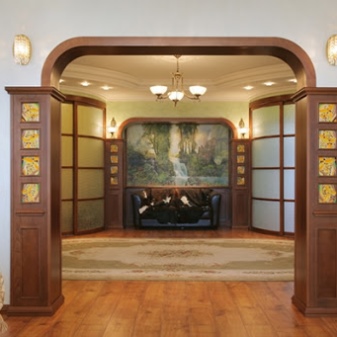
Materials (edit)
Various materials are used to create modern columns, as well as for decorative cladding - concrete, wood, metal, brick, natural stone, drywall, polystyrene, polyurethane. It all depends on the capabilities and desires, as well as the purpose of the structure itself - it should solve not only functional and aesthetic problems, but also organically fit into the general style, without violating the general concept.
- Stone. If the column is to act as a support, high-strength materials such as stone are used. This solution will strengthen the ceilings and serve as a solid foundation for the upper floor. When erecting columns, it must be borne in mind that a structure of this type is heavy, therefore, architectural norms must be taken into account when calculating.
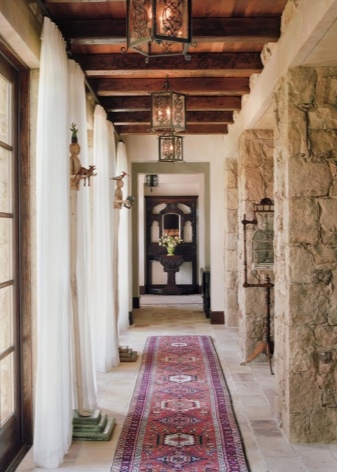

- Concrete. Decorative structures of enhanced functionality are appropriate to use in the construction of country houses and in large spaces of the basement and lower floors of shopping and other centers. For decorative finishes, you can use artificial stone that imitates natural material. It is lightweight, fits perfectly into many style solutions, and is convenient for various finishes. Indispensable if you want to focus on a certain style.

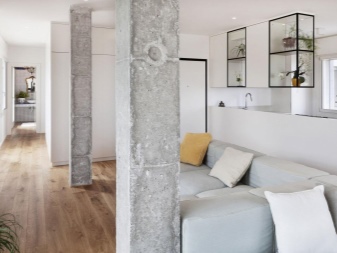
- Metal. Metal structures are used in loft, kitsch, minimalist interiors. Endless variations of the play of color contrasts of the surrounding finish are allowed. Metal models can be of any shape, but the round type is most often used. Designers prefer to use metals in silver, white and black shades in their work, but stainless steel is the leader among all options.
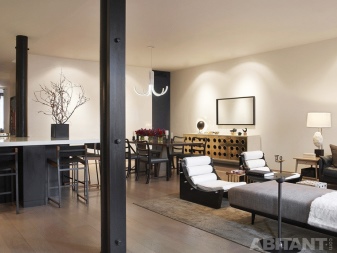
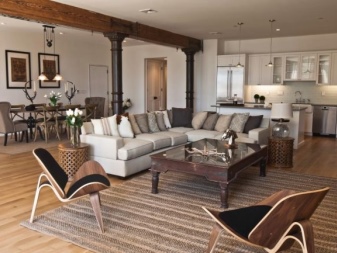
- Wood. Wooden columns are a testament to the love of natural, living materials. An environmentally friendly product - durable, retaining the aroma of fresh wood for many years. Such a structure, decorated with carvings, coated with a special oil or varnish, will perfectly fit into many interior solutions.
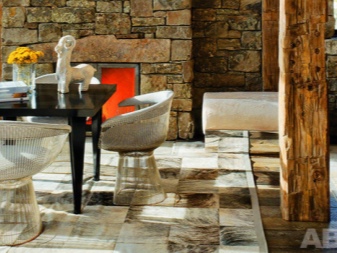
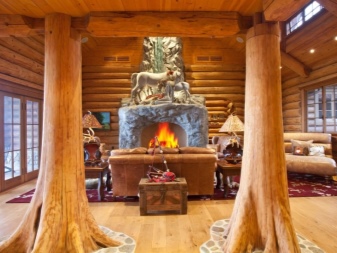
- Polyurethane. Decorative columns are made of polyurethane or plastic. Suitable for use in city apartments and on upper floors, since plastic is lightweight and easy to move. Polyurethane is flexible, dense structure and plasticity, which allows you to give it a different shape, creating masterpieces of design art and giving the environment a unique look.
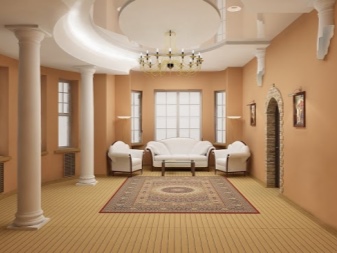
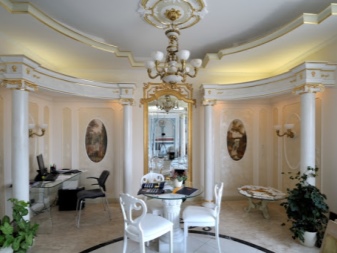
- Drywall. False plasterboard columns are techniques popular in the design environment. Their light weight allows the use of such columns in any type of room.An inexpensive project allows you to decorate a boring apartment with exquisite details, being affordable for any budget. Such structures are decorated with facing mosaics, supplemented with moldings, and imitate brickwork. It is most convenient to create rectangular shapes, although they can be made round if desired.
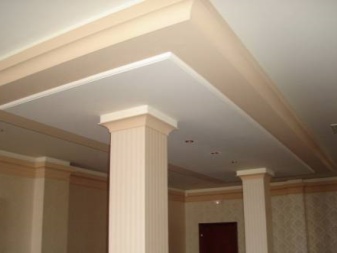

- Styrofoam. Lightweight foam structures play an exclusively decorative role. Most often, polystyrene is used to simulate half-columns, when it is simply glued to the wall. If it is planned to manufacture a column, then it is necessary to ensure that the joints are not visible. The finished product is covered with several layers of putty, after which it will look like a plaster structure. The finishing is done according to the wishes and tastes of the user.
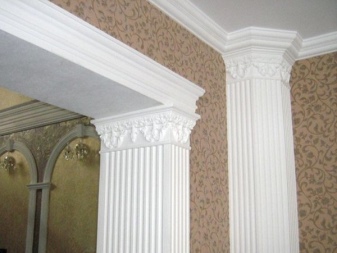
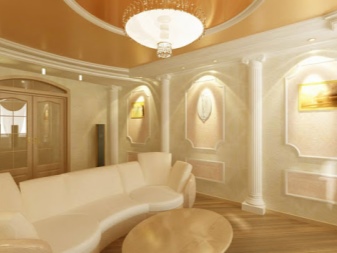
- Gypsum. Differs in relative lightness, environmental friendliness, strength and durability. The gypsum mass pleases with its high plasticity, this allows you to create the surface of the column of the most bizarre shape, it can be easily restored.
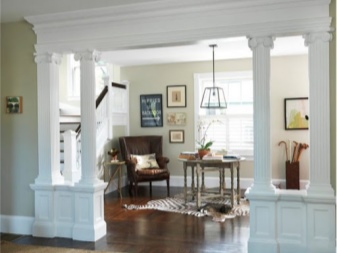
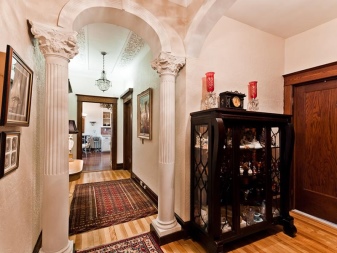
Styles
Before determining what type of columns will be performed, it is necessary to decide on the general style of the room or building. Each style has its own requirements for interior design.
- Baroque. This style prefers marble, gold paint, natural stone, Venetian plasters. The Baroque style is always luxury and sophistication.
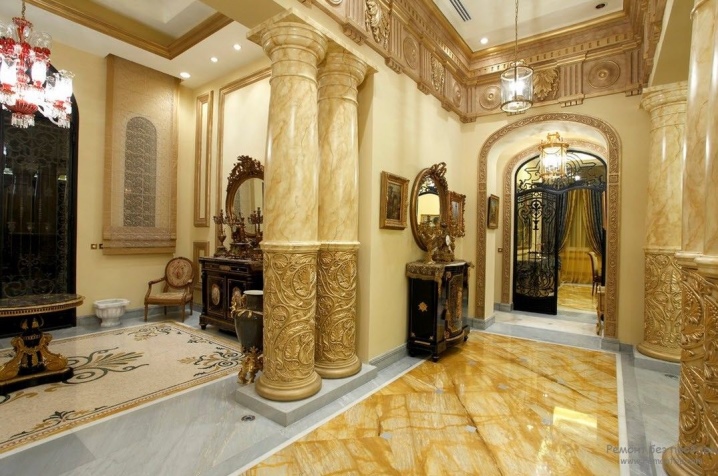
- Art Deco. This is a mixed style, incorporating elements of Baroque, Antiquity and Art Nouveau. Art Deco requires cleanliness, rigor and clarity of lines. Plaster or polyurethane stucco molding is allowed in the upper and lower parts. In the color scheme, preference is given to white.
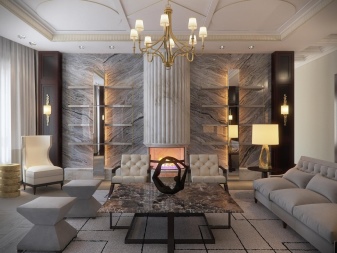
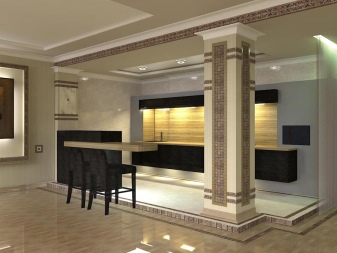
- Ethnic styles - Provence, country. Wood, natural or artificial stone, plasterboard with a suitable finish are used.
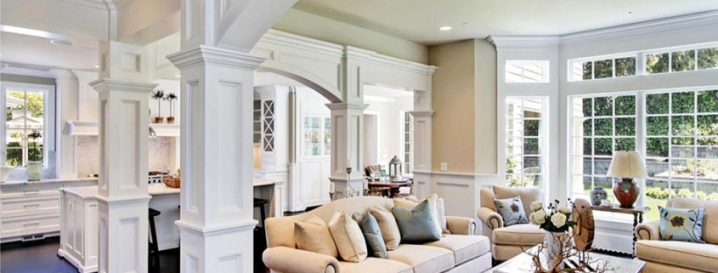
- Retro. A style that does not accept luxury, preferring rough finishes. It can be an imitation of natural stone, aged wood, old brickwork.


- East style. This, of course, is a mosaic in all its splendor, with bright colors, preferably blue, gold, red and other colors. As an option, an imitation of natural stone is used.

- High tech. A style that combines an original approach and unexpected solutions. The columns may not be made of traditional materials, but for example glass, filled with liquid inside, with a continuous illuminated movement of large and small bubbles. It can be metal or other materials with polished, reflective surfaces.
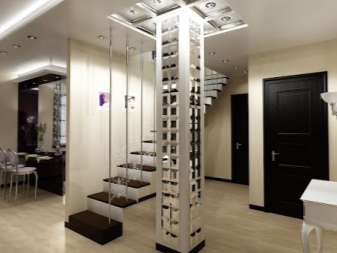
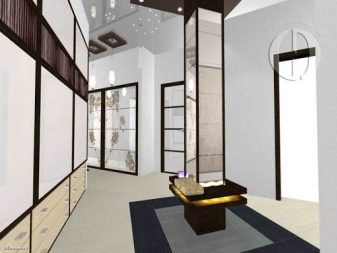
- Loft. This type of interior prefers clear geometric shapes - square, rectangular. It is preferable to imitate concrete, uneven plaster or brickwork.
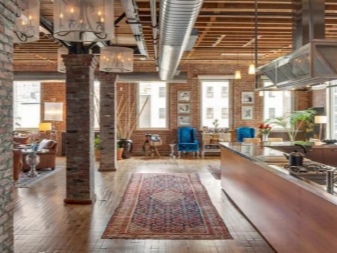
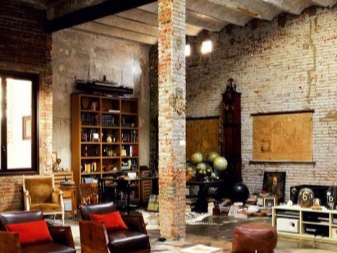
- Classical. Laconic style, sophistication of interior solutions, columns of white shades with marble imitation or natural stone. Stucco molding is allowed. The style prefers symmetry - paired columns.

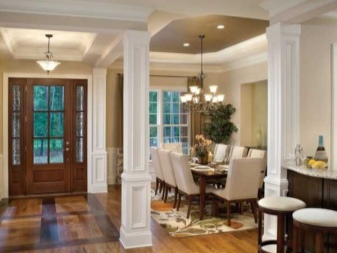
Beautiful examples
Baroque - luxury and sophistication.
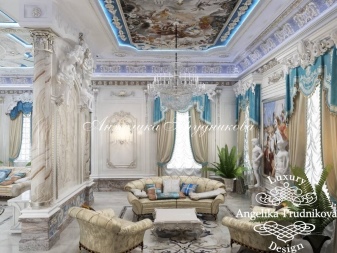
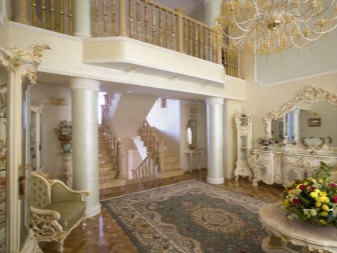
Art Deco is a mixture of antiquity and modernity.

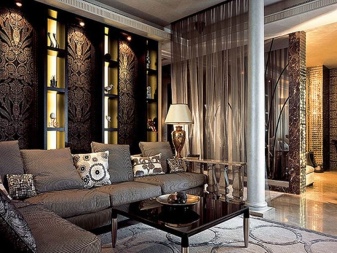
Ethnic style - paired columns, arches.

Loft - metal, industry, concrete, brick.
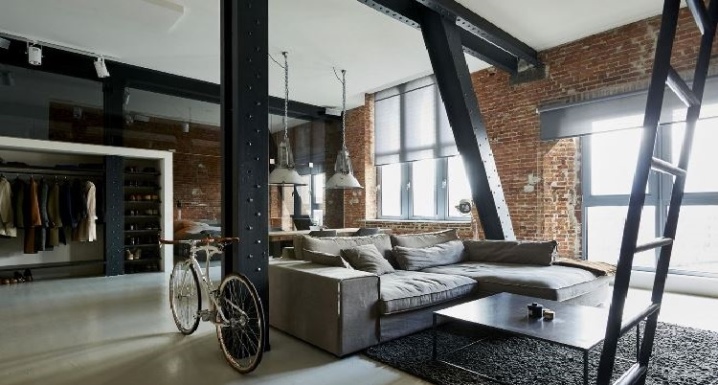
Modern is romantic splendor and luxurious romance.
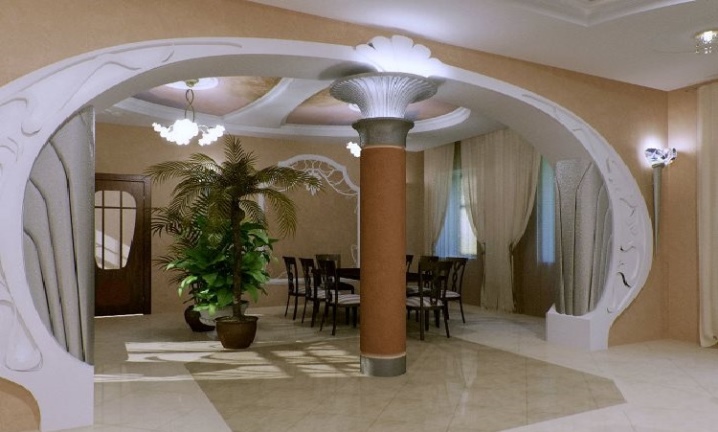
How to make columns with your own hands is shown in the next video.













The comment was sent successfully.